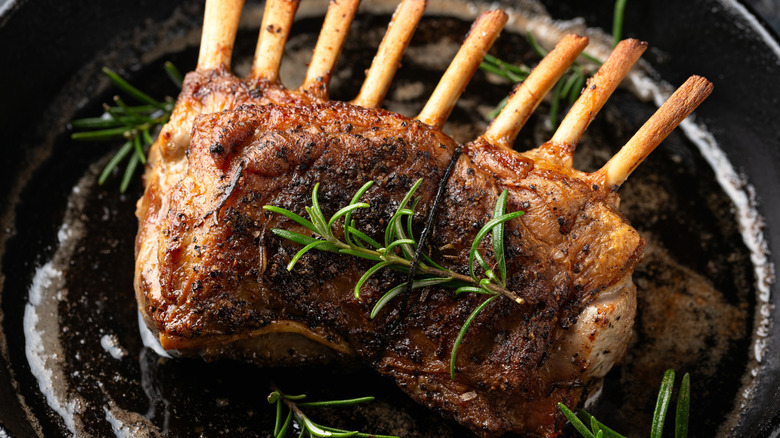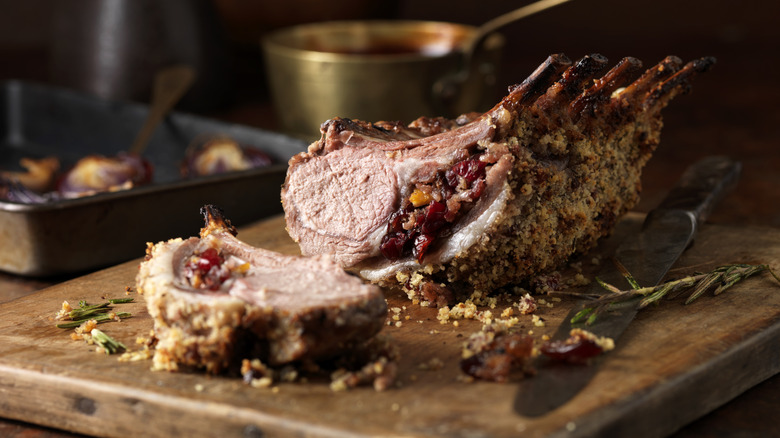How To Make A Standout Rack Of Lamb With A Crisp, Flavorful Crust
A rack of lamb is one of the finest things a person can prepare at home. That two make a crown when combined captures this grandeur better than most meaty monikers. It also isn't cheap, you're most likely serving it on more-special-than-most occasions, and it takes a little longer than your everyday chop, so you don't want to mess it up. And, as with plenty of roasts, making the surface maximally appealing in terms of flavor and texture is your first challenge.
Parmesan and a couple of other ingredients are your cheat code. A rack of lamb spends most of its cook time roasting in the oven rather than on the other carbon steel side of an open flame, minimizing its opportunity to sear, caramelize, or otherwise amplify flavor with fire alone. In this case, you have to be a little more mindful about creating a crust. Fortunately, Parmesan has never met a dish it didn't improve; virtually any soup's broth is boosted by the cheese rind, practically every pasta benefits from a heaping, and the iconic chicken parm is primary among them. And, together with panko breadcrumbs and some fragrant herbs, a rack of lamb joins the list.
Grating your way to a great rack of lamb
A rack of lamb can vary in size, but those containing eight chops, evidenced by their individually jutting bones, are fairly standard. That slab will typically weigh in at about 2 pounds, with a larger coverage area than your everyday protein. You'll need a generous mix of Parmesan, panko, and herbs to coat it all for a great crust. (Finer ground plain breadcrumbs work, too, we just prefer panko for its lighter finish.) Make at least a cup of the blend to avoid running out.
One part Parmesan, one part panko, and a couple of tablespoons of chopped herbs like parsley and mint nets a nice result, though you can pump up the cheese by about another ¼ cup for the extra umami. Minced garlic also performs nicely here. After searing your salt and peppered lamb and letting it cool enough to handle, you'll apply the crust. The lamb should still have enough surface oil left from searing for everything to stick, but you can brush on a bit more if necessary. From there, opt for a dredge-like dip-to-coat method, like you'd do with tuna steaks, to cover the full exterior. With a turn in the oven at around 400 degrees Fahrenheit to your desired doneness, that's a lamb rack wrap.

